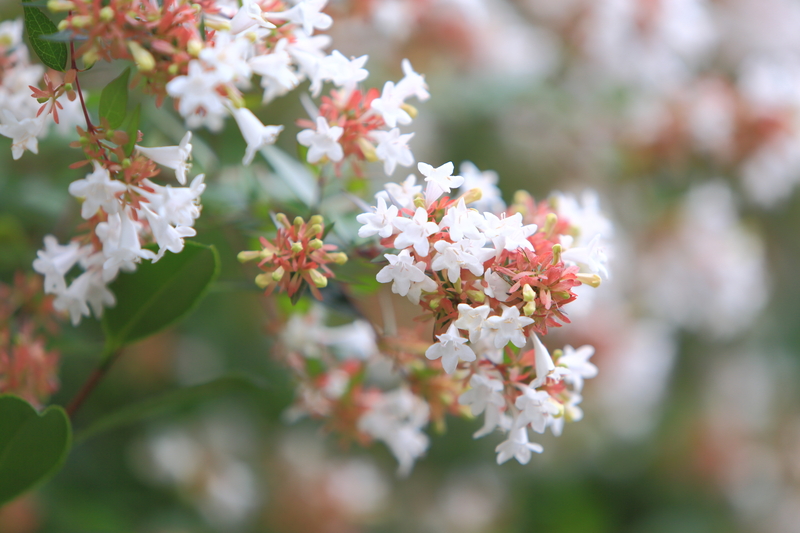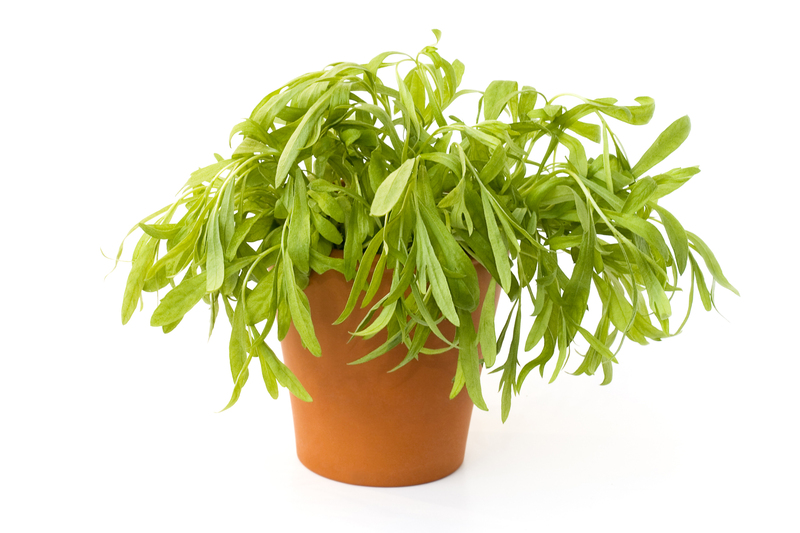Step-by-Step Guide to Growing a Thriving Herb Garden
Posted on 28/06/2025
Step-by-Step Guide to Growing a Thriving Herb Garden
Have you ever dreamed of picking fresh basil for your pasta or adding just-cut mint to your lemonade? Whether you're a cooking enthusiast, a garden lover, or simply wish to add greenery to your windowsill, growing a thriving herb garden is rewarding and accessible to all skill levels. In this comprehensive guide, we'll walk you through every step needed to create and sustain a lush herb garden--indoors or outdoors!
Why Grow Your Own Herb Garden?
- Freshness: Homegrown herbs are at their flavor peak and can be picked right before use.
- Cost-effective: Once established, an herb garden saves money compared to buying store-bought bunches.
- Convenience: Enjoy immediate access to a selection of favorite herbs.
- Health Benefits: Many herbs offer antioxidants, vitamins, and medicinal properties.
- Aesthetic Pleasure: Herbs add beauty and fragrance to your living space.

Choosing the Perfect Location for Your Herb Garden
Selecting the right location is critical for a successful herb garden. Herbs generally require at least 6 hours of sunlight daily, so pick a sunny spot in your yard, balcony, or a windowsill with ample light. Here's what you should consider:
- Sunlight: Most herbs like basil, thyme, oregano, and rosemary thrive in full sunlight. Mint and parsley can tolerate partial shade.
- Drainage: Ensure your planting area allows water to drain easily; soggy soil causes root rot.
- Accessibility: Keep your garden within reach for easy harvesting.
Indoor vs Outdoor Herb Gardens
Should you grow your herbs indoors or outdoors? Each option offers unique benefits:
- Outdoor Herb Garden: Best for year-round growth in temperate climates; allows for larger harvests.
- Indoor Herb Garden: Perfect for small spaces and year-round access; protects herbs from pests and extreme weather.
Step 1: Selecting the Right Herbs for Your Garden
When choosing which herbs to grow, think about your favorite dishes and the climate in your area. Here's a list of popular and easy-to-grow herbs:
- Basil
- Parsley
- Mint
- Rosemary
- Thyme
- Oregano
- Cilantro
- Sage
- Chives
- Dill
Pro tip: For beginners, start with 3-5 herb types to keep your herb garden manageable.
Annual vs. Perennial Herbs
- Annual herbs: Basil, cilantro, and dill need replanting every year.
- Perennial herbs: Rosemary, thyme, sage, oregano, and mint often return year after year.
Step 2: Prepping the Soil and Containers
Soil preparation is vital to growing a healthy, productive herb garden. Most herbs prefer a well-draining, light, fertile soil. Here's what you need to know:
Outdoor Garden Beds
- Loosen the soil to about 12 inches deep.
- Work in organic matter like compost or peat moss to improve fertility and drainage.
- Add a balanced fertilizer if your soil is poor in nutrients.
Container Herb Gardens
- Select containers with good drainage holes.
- Use a high-quality potting mix--avoid garden soil, which can compact in pots.
- Place saucers beneath to manage excess water indoors.
Tip: Consider self-watering containers if you travel frequently or forget to water.
Step 3: Planting Your Chosen Herbs
Knowing when and how to plant herbs ensures their best chance for success:
Seeds vs. Starter Plants
- Seeds: More economical and offer a broader herb selection, but require more patience and care.
- Starter Plants: Instant gratification and an easier route for first-time herb gardeners.
How to Plant Herbs
- Plant seeds or seedlings after the danger of frost has passed, usually in spring.
- Sow seeds according to package depth and spacing instructions.
- Gently firm the soil over your seeds or around starter plant roots.
- Water thoroughly but avoid waterlogging the soil.
- Label each herb to prevent confusion as they grow.
Step 4: Caring for Your Herb Garden
Consistent care is the secret to a lush and productive herb garden. Here's what you should prioritize:
Watering Your Herbs
- Check soil dampness with your finger; most herbs prefer slightly dry to moist soil, not soggy.
- Water early in the morning to reduce evaporation and disease risk.
- Indoor herbs typically need less water due to lower evaporation rates.
- Mint and basil require slightly more water than woody-stemmed herbs like rosemary.
Fertilizing for Maximum Growth
- Use a balanced, liquid fertilizer every few weeks during the growing season.
- Over-fertilizing can reduce essential oil concentration and flavor--use sparingly.
- Compost tea is a gentle, organic alternative that herbs love.
Pruning and Harvesting
- Regularly snip or pinch back herb growth to encourage bushier, healthier plants.
- Harvest leaves in the morning for maximum flavor.
- Avoid cutting more than one-third of a plant at a time.
Pruning also prevents herbs like mint and oregano from becoming overly invasive.
Step 5: Managing Pests and Diseases
Every herb gardener faces challenges with pests or disease. Preventive action is key.
- Inspect plants regularly for aphids, spider mites, or whiteflies.
- Remove infected leaves or rinse pests off with water.
- Encourage beneficial insects such as ladybugs and lacewings.
- Promote air circulation by spacing plants adequately.
- Avoid overhead watering, which can lead to fungal diseases.
Natural remedies: A diluted, mild soap spray helps control most soft-bodied pests without harming your herbs.
Step 6: Harvesting and Using Your Homegrown Herbs
Enjoying the fruits of your herb garden is the most satisfying reward! Here's how to harvest and preserve your fresh herbs:
How to Harvest
- Begin harvesting with clean loppers or scissors once herbs are 6-8 inches tall.
- Pick outer leaves first, working your way in.
- Basil, mint, and parsley can be harvested continually all summer.
Storing and Preserving Herbs
- For short-term use, store cut herbs in a glass of water or the refrigerator wrapped in a damp towel.
- To preserve for winter, air dry bunches of robust herbs (rosemary, thyme, sage), or freeze softer herbs (basil, chives).
- Herbs can also be chopped and stored in olive oil in ice cube trays for instant flavor boosts.
Creative Ways to Use Fresh Herbs
- Boost everyday dishes with the zest of freshly picked herbs.
- Infuse olive oils or vinegars for salad dressings.
- Mix custom herb blends for marinades, rubs, or teas.
- Herbs like lavender and mint can enhance desserts and beverages.
Common Mistakes in Growing Herb Gardens (and How to Avoid Them)
- Overwatering: Most herbs prefer slightly dry conditions--let soil dry before watering.
- Insufficient sunlight: Move pots or beds to sunnier locations if herbs look spindly.
- Poor air circulation: Don't overcrowd your herbs--even indoors, space is important.
- Harvesting too aggressively: Allow herbs time to regrow by only taking one-third at a time.
- Ignoring local climate: Protect tender herbs from frost or heatwaves as needed.

FAQs: Expert Answers to Herb Gardening Questions
Can I grow a thriving herb garden in the shade?
Some herbs like mint, parsley, and chives tolerate partial shade, but most require at least 4-6 hours of sunlight daily to flourish.
Which herbs are easiest for beginners?
Basil, mint, chives, and sage are hardy and forgiving, making them ideal for novice gardeners.
How often should I water my herb garden?
This varies by season and location. Water when the top inch of soil feels dry to the touch, and avoid letting herbs stand in wet soil.
Can I grow herbs together in the same pot?
Yes! Combine herbs with similar watering needs for best results. For instance, rosemary, thyme, and oregano pair well, but keep mint in its own pot to prevent takeover.
How can I make my herb garden more productive?
- Prune frequently: Regular harvesting encourages fresh growth.
- Feed sparingly: Too much fertilizer makes herbs leafy but less flavorful.
- Rotate crops: In outdoor beds, rotate herb families each season to minimize pests and diseases.
Conclusion: Start Your Thriving Herb Garden Today!
Growing a thriving herb garden--whether on a sunny kitchen windowsill or in your backyard--is easier than you think! With the right location, a thoughtful selection of herbs, and attentive care, you'll enjoy delicious, aromatic harvests throughout the year. From basil and mint to rosemary and thyme, cultivating your own herbs not only enhances your cooking but also brings fresh beauty and flavor to your home. Follow this step-by-step herb gardening guide, and you'll soon reap the rewards of a lush, productive, and healthy herb garden.
Ready to dig in? Gather your seeds, pots, and enthusiasm--and start your flourishing herb garden journey today!



